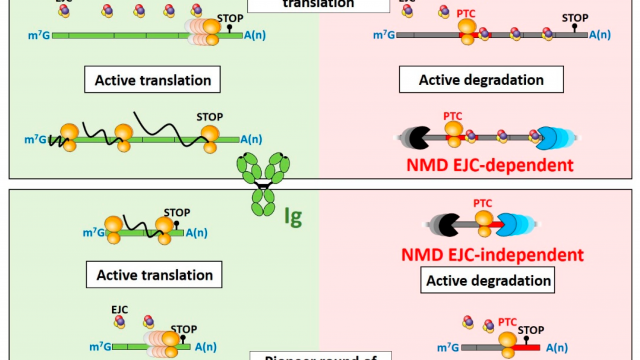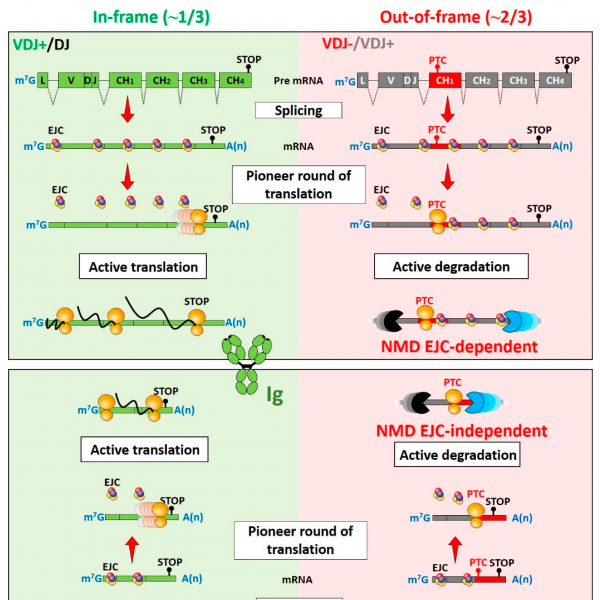
Mechanisms and Regulation of Nonsense-Mediated mRNA Decay and Nonsense-Associated Altered Splicing in Lymphocytes
L’équipe Régulation post-transcriptionnelle de l’expression des immunoglobulines dirigée par Laurent Delpy vient de publier un article dans la revue International Journal of Molecular Sciences :
Mechanisms and Regulation of Nonsense-Mediated mRNA Decay and Nonsense-Associated Altered Splicing in Lymphocytes
- PMID: 32079193
- PMCID: PMC7072976
- DOI: 10.3390/ijms21041335
Abstract
The presence of premature termination codons (PTCs) in transcripts is dangerous for the cell as they encode potentially deleterious truncated proteins that can act with dominant-negative or gain-of-function effects. To avoid the synthesis of these shortened polypeptides, several RNA surveillance systems can be activated to decrease the level of PTC-containing mRNAs. Nonsense-mediated mRNA decay (NMD) ensures an accelerated degradation of mRNAs harboring PTCs by using several key NMD factors such as up-frameshift (UPF) proteins. Another pathway called nonsense-associated altered splicing (NAS) upregulates transcripts that have skipped disturbing PTCs by alternative splicing. Thus, these RNA quality control processes eliminate abnormal PTC-containing mRNAs from the cells by using positive and negative responses. In this review, we describe the general mechanisms of NMD and NAS and their respective involvement in the decay of aberrant immunoglobulin and TCR transcripts in lymphocytes.
Keywords: Immunoglobulin (Ig), Nonsense-mediated mRNA decay (NMD), Nonsense-associated altered splicing (NAS), B lymphocytes; Plasma cells.

